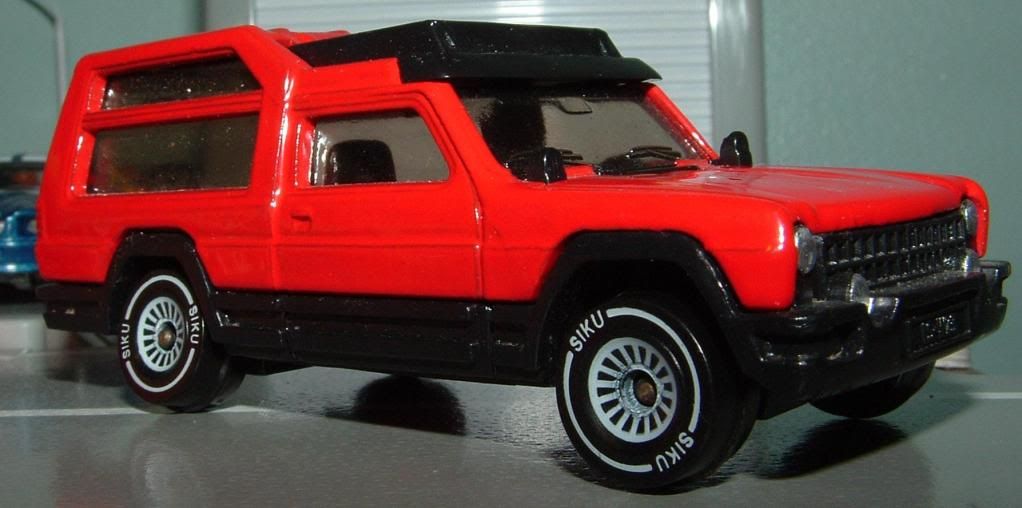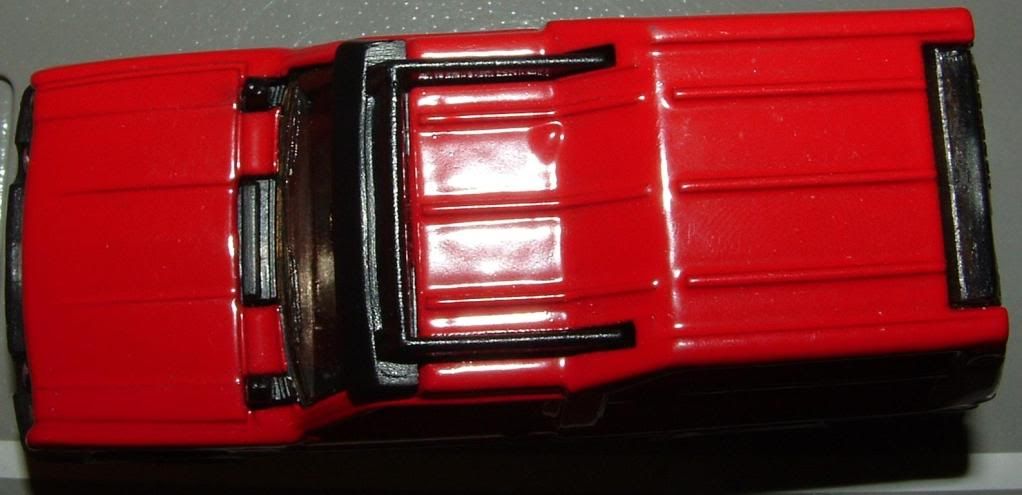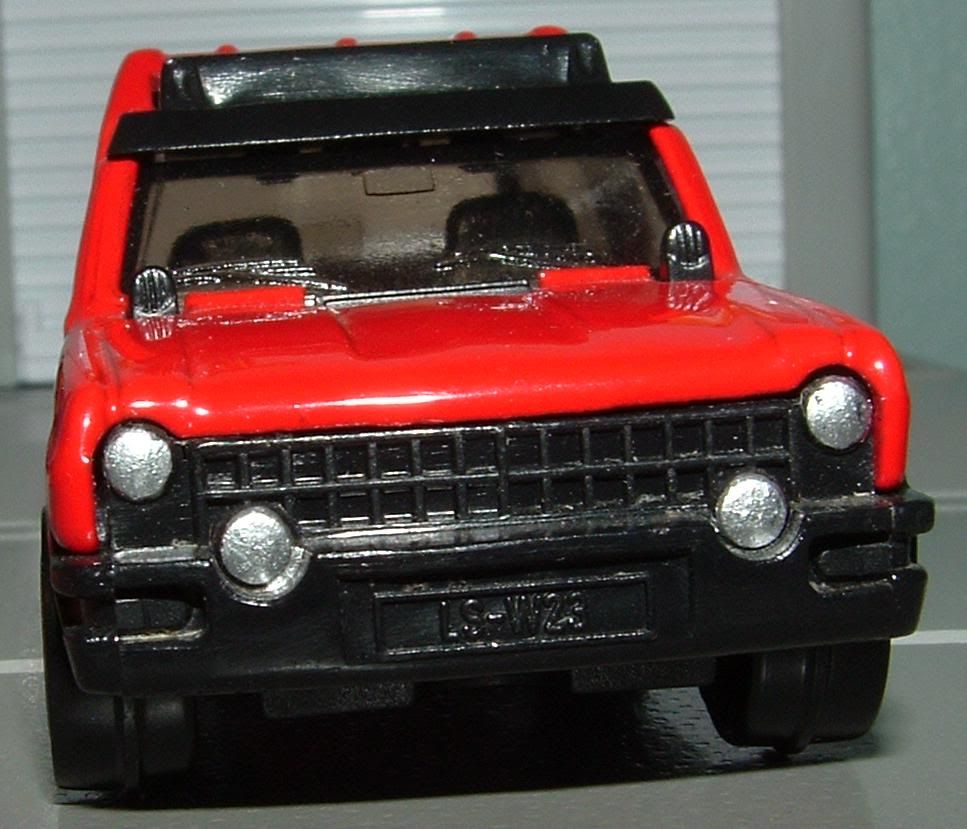
A blog focusing on 1/64 diecast from such popular brands as Hot Wheels, Matchbox, Johnny Lightning, M2 Machines, GreenLight, Tomica, Yat Ming, Majorette, MotorMax, Siku, Corgi, Guisval, Playart, Ertl, Zylmex, Racing Champions, & many more. Swifty's Garage features a daily Car Of The Day and news updates from your favorite brands!
Sunday, October 9, 2011
Car Of The Day: October 9, 2011
Today's car of the day is Siku's 1980 Matra Rancho.
The Matra Rancho was a leisure activity vehicle created by the French engineering group Matra in cooperation with the automaker Simca to capitalize on the off-road trend, started by the Range Rover, by providing the "off-road look" at a lower price.
The Rancho was launched in 1977 and became a popular model, but this did not alleviate more wider problems at Chrysler Europe (Simca's parent company). Chrysler finally sold its European arm to PSA in 1978, following which it was rebranded as Talbot in 1979. The Matra-Simca Rancho now became the Talbot Matra Rancho and production continued until 1984 (although it remained on sale up to January 1985), reaching 57,792 cars in total.
For more information and pictures of the real car please visit: Matra Rancho
Despite being a relatively successful model for Simca/Talbot, the Rancho has all but disappeared from European streets these days. They are prone to rust and had a very low survival rate. Which is a pity because this is a very good looking vehicle. Minitures were made by Matchbox and Corgi in addition to the Siku seen here.
Designed by Antonis Volanis, the Rancho was based on the pick-up version of Simca's popular supermini, the Simca 1100, using its front structure and a stretched chassis. The rest of the body was made by Matra from fibreglass and polyester, including the mouldings adorning the body, which made it look more "sturdy". This technology would later be used on the Renault Espace, Europe's first MPV, which was manufactured by Matra. The ground clearance was also increased. Unlike most off-roaders, it was not fitted with all-wheel drive, retaining the 1100s front-wheel drive layout. Other elements retained from the 1100 included the dashboard and front seats (identical with the ones found in the Simca 1100 GLS). The Rancho was powered by the 1442 cc, 80 bhp version of the Simca Type 315 straight-4 engine.
During its life, the Rancho was offered in several versions. Apart from the basic Rancho, there was the Grand Raid, fitted with such "off-road" extras as an electric winch on the front bumper and the spare wheel mounted on the roof - as well as a limited-slip differential. The Rancho X was the upscale model, with additional standard items such as alloy wheels and metallic paint. The Découvrable model's rear cabin consisted of an open frame with roll-down fabric covers, which could serve as an "open" car during good weather. Finally, the Rancho AS was the commercial version, with no rear seat, making it exempt from the French tax on passenger cars.
The Rancho spawned an unlikely successor: the Renault Espace. Matra wanted to replace the Rancho with their prototype of the Espace known as the “dessin orange”, which translates to “the orange drawing” in English – both the prototype and the background it was drawn on were orange. It predicted the basic shape of the first Espace but only had three doors instead of five. Peugeot (who controlled Matra at the time) deemed the project too expensive and not promising enough. Determined to take its design to production Matra knocked on Renault’s door and they quickly adopted the project, one that upon its launch in 1984 arguably became the first European minivan.
Subscribe to:
Post Comments (Atom)







No comments:
Post a Comment